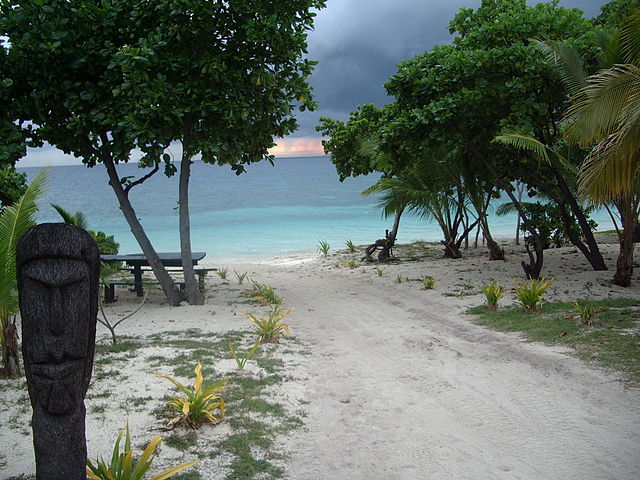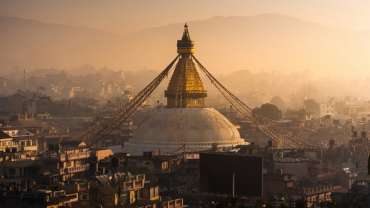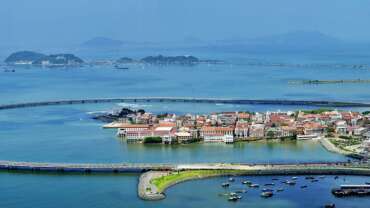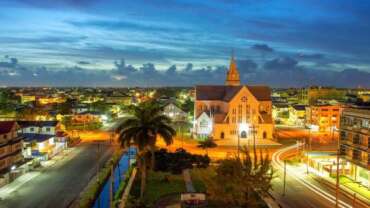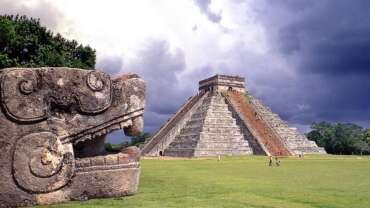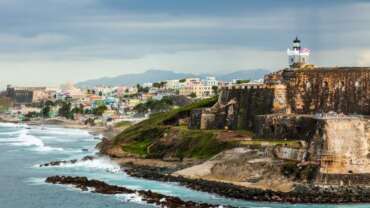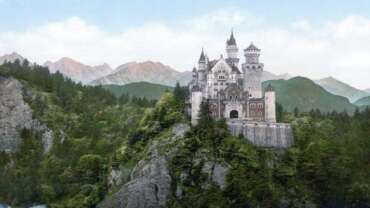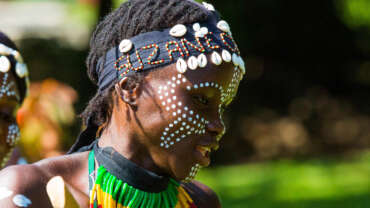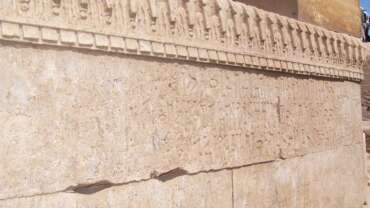Fiji - where happiness finds you
Fiji, a country in the South Pacific, is an archipelago of more than 300 islands. It’s famed for rugged landscapes, palm-lined beaches and coral reefs with clear lagoons. Its major islands, Viti Levu and Vanua Levu, contain most of the population. Viti Levu is home to the capital, Suva, a port city with British colonial architecture. The Fiji Museum, in the Victorian-era Thurston Gardens, has ethnographic exhibits.
History of Fiji
When Fiji’s first settlers arrived from the islands of Melanesia at least 3,500 years ago, they carried with them a wide range of food plants, the pig, and a style of pottery known as Lapita ware. That pottery is generally associated with peoples who had well-developed skills in navigation and canoe building and were horticulturists. From Fiji the Lapita culture was carried to Tonga and Samoa, where the first distinctively Polynesian cultures evolved. Archaeological evidence suggests that two other pottery styles were subsequently introduced into Fiji, though it is not clear whether they represent major migrations or simply cultural innovations brought by small groups of migrants. In most areas of Fiji, the settlers lived in small communities near ridge forts and practiced a slash-and-burn type of agriculture. In the fertile delta regions of southeast Viti Levu, however, there were large concentrations of population. Those settlements, which were based on intensive taro cultivation using complex irrigation systems, were protected by massive ring-ditch fortifications.
Traditional Fijian society was hierarchical. Leaders were chosen according to rank, which was based on descent as well as personal achievement. Organized through residence and kinship (in the latter case through mataqali, or clans, and residential subclans), Fijians participated in a flexible network of alliances that sometimes brought communities together and at other times caused them to oppose one another. By alliance or conquest, communities might form confederations led by paramount chiefs; warfare was common.
The first Europeans to sight the Fiji islands were Dutch explorer Abel Janzsoon Tasman, who passed the northeast fringe of the group in 1643, and Capt. James Cook, who passed the southeastern islands in 1774. Capt. William Bligh traveled through the group in his open longboat after the mutiny on the HMS Bounty in 1789 and returned to explore it in 1792.
Commercial interest in the islands began with the discovery of sandalwood at the beginning of the 19th century, leading to a rush to Bua (Mbua) Bay, at the southwestern end of Vanua Levu. A few beachcombers, useful as armourers and interpreters, were adopted by influential chiefs from that time. Within little more than a decade the accessible commercial stands of sandalwood were depleted, but by the 1820s traders were again visiting the islands to trade for edible varieties of sea cucumber, the marine invertebrate also known as bêche-de-mer or trepang. Whereas most of the sandalwood had been cut by gangs of foreigners, the bêche-de-mer harvest involved large numbers of Fijians in gathering, cleaning, and drying and in the provision of food and firewood.
Those opportunities for new wealth and power, symbolized by the acquisition of muskets, intensified political rivalries and hastened the rise of the kingdom of Bau, a tiny island off the east coast of Viti Levu, ruled first by Naulivou and then by his nephew Cakobau. By the 1850s Bau dominated western Fiji. Cakobau’s main rival was the Tongan chief Maʿafu, who led an army of Christian Tongans and their allies from eastern Fiji. After a short-lived alliance with Maʿafu, Cakobau became a Christian in 1854, thus bringing most Fijians under the influence of Methodist missionaries. Roman Catholic and Anglican missionaries arrived later but did not enjoy the same success.
By the 1860s Fiji was attracting European settlers intent on establishing plantations to capitalize on a boom in cotton prices caused by the American Civil War. Disputes ensued over land and political power within and between European and Fijian communities, and problems arose with labourers introduced from other Pacific islands. Those factors contributed to violent confrontations, exacerbated the implicit instability of Fijian society, and ensured that no Fijian chief could impose his rule on the whole group. European attempts at government were doomed by the greed and factionalism of their members and by the interference of European governments and consuls. Imperial intervention thus became inevitable.
On October 10, 1874, after negotiations had led to an offer of unconditional cession, Fiji became a British crown colony. The policies of the first governor, Sir Arthur Gordon, were decisive in shaping the history of Fiji. Gordon saw himself as the protector of the Fijian people and thus initiated policies that limited their involvement in commercial and political developments. Sales of Fijian land were banned; the Fijians were taxed in agricultural produce, not cash; and they were governed through a system of indirect rule based on the traditional political structure.
In order to maintain those policies yet encourage the economic development of the new colony, Gordon promoted the introduction of indentured Indian labourers and investment by an Australian concern, the Colonial Sugar Refining Company, to establish sugar plantations and processing mills. Indian migrants were encouraged to become permanent settlers at the conclusion of their contracts, even though little land was available for sale and the migrants’ political rights were circumscribed. After the termination of the indenture system in 1920, Indian agitation over political and economic grievances caused strikes and continual discontent and challenged the commercial and political domination of the small European community in the islands.
During World War II Fiji was occupied by Allied forces, and a battalion of Fijians saw service as scouts in the campaign for the Solomon Islands. Indians, whose history as indentured workers in Fiji had provided them with grievances regarding their unequal treatment in society, refused to serve on political grounds, including the fact that army volunteers from Fiji were offered lesser wages and conditions than were Europeans; consequently, the army, which was retained after the war, remained exclusively Fijian except for a handful of European officers. Indians also refused to cut cane at the low prices offered. Those actions led to the taint of disloyalty being applied to Indians by the other ethnic groups. After the war, the colonial authorities restructured the Fijian administration, reinforcing chiefly leadership and thus consolidating the conservatism of Fijian society.
Constitutional development toward independence, which began in the 1960s, was more a response to international and British pressures than to any demand from within Fiji. The 1966 constitution represented a compromise between the principles of parliamentary democracy and the ethnic divisions within the country. The franchise, previously exercised by Europeans and some Indians, was extended to adults of all ethnic backgrounds, including Fijians, who until then had been represented by their chiefs. Fijian land rights, guaranteed by the Deed of Cession in 1874, were given constitutional protection, while Fijian chiefs were given an effective veto in all important matters affecting the status of Fijians and in changes to the constitution itself. Although Indian leaders had since the 1930s argued for an electoral system using a common roll of voters, they now faced political reality and accepted the new system. Voters were classified according to ethnicity: Fijian, Indian, or General, which included citizens of any non-Fijian, non-Indian ethnicity. Legislative representatives were elected from Indian and Fijian rolls (called communal rolls) and from cross-voting rolls, which presented candidates as members of their ethnic constituencies who were then elected by voters of all ethnicities.
The effect of the constitution was to give power to Fijian politicians so long as they remained in partnership with the General voters and, critically, so long as the Fijian vote remained unified. Despite “race riots” during by-elections in 1968, independence was achieved in a spirit of cooperation on October 10, 1970, the 96th anniversary of cession.
From that time until April 1987, Fiji was governed by the Alliance Party, which was pledged to policies of “multiracialism.” Its electoral supremacy was challenged only briefly, in 1977, when Fijian votes were attracted by Fijian nationalist candidates campaigning under a slogan of “Fiji for the Fijians”; only factionalism prevented the formation of an Indian-led government.
In 1987, however, the Indian-dominated National Federation Party joined in coalition with the new Labour Party (led by a Fijian, Timoci Bavadra), which had strong support from Fijian and Indian trade unionists. The coalition was successful in elections held in April. The new government, which had a majority of Indian members in the legislature, was greeted with widespread Fijian protest. After only a few weeks the new government’s leaders were arrested and deposed in a coup d’état led by Lieut. Col. Sitiveni Rabuka, who demanded greater protection for Fijian rights and an entrenched Fijian dominance of any future government. The governor-general declared a state of emergency and assumed control of the government. He then negotiated a compromise with political leaders that would have maintained civilian rule pending a constitutional revision and new elections. Dissatisfied with the progress of negotiations, however, Rabuka led a second coup in September and reimposed military rule. Toward the end of 1987 he declared Fiji a republic and revoked the 1970 constitution. Fiji was expelled from the Commonwealth. Rabuka appointed a new civilian government. A new constitution, designed to concentrate power in the hands of Fijians, was promulgated on July 25, 1990.
Under the 1990 constitution, Rabuka was elected to parliament and went on to become prime minister in 1992. Two years later a Constitutional Review Commission was established that was charged with recommending changes to lessen the ethnic bias built into the constitution. Work on the constitutional revision was the political focus throughout the mid-1990s, and a number of Fijian nationalist groups organized to oppose Rabuka and the work of the commission, which published its recommendations in September 1996. In 1997 Fiji was readmitted to the Commonwealth over the objection of Fijian nationalists and many Indians. The proposed constitutional changes were approved that year and took effect in 1998.
In May 1999 Mahendra Chaudhry became Fiji’s first prime minister of Indian ancestry. Fijian nationalists strongly opposed Chaudhry’s premiership, and during his first months in office there were a number of arson and bomb attacks in Suva linked to extremists. However, Chaudhry easily survived a no-confidence motion by nationalist legislators in August 1999. On May 19, 2000, Chaudhry and his government were taken hostage and deposed by a group led by businessman George Speight, who claimed to be acting for indigenous Fijians. Speight was backed in the coup by rebel members of the army’s counterrevolutionary warfare unit. The coup was accompanied by widespread looting and destruction of Indian-owned businesses in Suva. The president, Ratu Sir Kamisese Mara (who had served as prime minister for most of the postindependence period), promptly declared a state of emergency and took over governing powers of the country. However, after continuous deadlock in negotiations with the coup leaders, the army declared martial law and took over the reins of power.
In July 2000 a Fijian-dominated interim civilian administration was appointed by the military commander to lead the country back to democracy. Just over a week later the Bose Levu Vakaturaga (Great Council of Chiefs) appointed Ratu Josefa Iloilo (formerly the vice president) as interim president, and the rebels released the hostages after 56 days of captivity in the parliamentary complex. In November, Fiji’s High Court declared the military-installed government illegitimate, decreeing that the parliament ousted in May remained the country’s governing authority. Legal appeals of the ruling lasted into 2001, by which time the Bose Levu Vakaturaga reconfirmed Iloilo as president and called for a general election in August and September. Chaudhry failed to retain his post, and the interim premier, Laisenia Qarase of the nationalist Fiji United Party, was confirmed as prime minister in September 2001.
Tensions between the military and the elected government continued. In 2002 plans were introduced for the privatization of the sugar industry, which was in danger of collapse after the withdrawal of subsidies from the European Union. Qarase’s party narrowly won the May 2006 elections, and he began his second term. In December, however, military leader Voreque Bainimarama seized power, dismissing Qarase and establishing himself briefly as the country’s sole leader. In January 2007 he restored executive powers to President Iloilo, who then named Bainimarama interim prime minister. Bainimarama then proceeded to appoint an interim cabinet. He promised to schedule elections within the next several years but committed to no firm timetable and in April suspended the activities of the Bose Levu Vakaturaga. Following an April 2009 ruling by the Fiji Court of Appeal that the Bainimarama government had been put in place illegally after the 2006 coup, President Iloilo announced that he had abrogated the 1997 constitution and dismissed the country’s judges. Iloilo put off national elections until 2014 and appointed a new interim government with Bainimarama again as prime minister. In July 2009 Iloilo announced his retirement from the presidency, and that November former vice president Epeli Nailatikau, who had been serving as acting president, was formally installed in the office.
In early March 2012 Bainimarama announced a plan to create a new constitution by the following year, ahead of the 2014 elections. The constitution’s provisions, he said, would include an independent judiciary and transparent governance. Approximately a week later he abolished the Bose Levu Vakaturaga, calling that body an outdated and divisive relic of the British colonial era. An independent consulting team commissioned by the government drafted a new constitution and by late 2012 was preparing to release it to the government for consideration and approval. The Bainimarama regime rejected it before deliberations could begin, however, citing objections to some of its provisions. Those included a lack of immunity for participants in past military coups and human rights abuses. The government then prepared its own document, which came into effect on September 7, 2013. Bainimarama stressed its provision of an independent judiciary and its enshrinement of a number of civil and political rights, as well as the creation of a 50-member popularly elected legislature. The constitution received strong criticism from international human rights groups, however, because it granted legal immunity to coup participants and curtailed other rights, particularly regarding a clause that allowed leaders to suspend freedoms in the event of government-declared emergencies.
Parliamentary elections duly took place on September 17, 2014, and were won by Bainimarama’s FijiFirst party, bringing to an end Fiji’s so-called “transitional” period, which had begun with his coup eight years before. Bainimarama, who had resigned as head of the military in March, was sworn in as prime minister as a civilian following the elections.
People of Fiji
Ethnic groups
Although the indigenous Fijian people are usually classified as ethnically Melanesian, their social and political organization is closer to that of Polynesia, and there has been a high level of intermarriage between Fijians from the Lau group of islands of eastern Fiji and the neighbouring Polynesian islands of Tonga. Indigenous Fijians make up more than half the population; about another two-fifths are people of Indian descent, most of whom are descendants of indentured labourers brought to work in the sugar industry. A small number of Indians, particularly in commerce and in professions such as medicine and law, are descended from free migrants. There are minorities of part-Europeans, Chinese, and Pacific Islanders who have origins outside Fiji. In the last group is the Polynesian population of the Fijian dependency of Rotuma—an island of 18 square miles (47 square km) located about 400 miles (645 km) north-northwest of Suva—and the Banabans. The latter were forced to leave their home island, Banaba, now part of Kiribati, after destruction during World War II made it uninhabitable. Many Banabans settled on Rabi (Rambi) Island, off the eastern coast of Vanua Levu.
Languages and religion
English, Fijian, and Fijian Hindi were given equal status as official languages by the 1997 constitution. The widely used Fijian language has many dialects; the one most commonly used is known as Bauan Fijian and comes from Bau (Mbau), an island that enjoyed political supremacy at the advent of colonial rule. Most people speak at least two languages, including English and the language of their own ethnic community. Almost all indigenous Fijians are Christian, mostly Methodist. Most Indians are Hindu, though a significant minority are Muslim. About one-tenth of the population is Roman Catholic, and there is a small Assemblies of God community.
Art & Culture of Fiji
Cultural Life
Daily life and social customs
Fiji’s mixed ethnicity contributes to a rich cultural heritage. Many features of traditional Fijian life survive; they are most evident in the elaborate investiture, marriage, and other ceremonies for high-ranking chiefs. Those ceremonies provide a focus for the practicing of traditional crafts, such as the manufacture of masi, or tapa cloth, made from the bark of the paper mulberry; mat weaving; wood carving; and canoe making. Drinking of yanggona (kava, made from the root of Piper methysticum) takes place not only as a part of important ceremonies but also as a part of the everyday life of Fijians and Indians alike.
The Indians of Fiji continue to maintain their own culture. Traditional marriage ceremonies are practiced, as are customs such as fire walking and ritual self-torture during the annual Guru Purnima festival, at the time of the full moon in July or early August. Diwali, the Hindu festival of lights, is celebrated every October as a public holiday.
The arts and cultural institutions
Displays of “traditional” Fijian culture, music, and dancing make an important contribution to tourism; model villages and handicraft markets are popular with tourists. A traditional song-and-dance performance, the meke, is rooted in storytelling traditions. In its strictest form, the meke involves chanting by shamans, whose bodies take on spirits of the netherworld, accompanied by dancing, rhythmic clapping, and the beating of slit drums. The meke is one of the traditional performances at the Arts Village, a model community and tourist centre near Deuba. Cinemas showing imported Indian films are popular. The Fiji Museum, located in the Thurston Botanical Gardens in Suva, contains a fine collection of war canoes and other artifacts.
Natural Fiji – where biodiversity and sustainability meet.
Nature based tourism is an excellent way to educate people about environmental conservation. Often, they present guests with clever ways to help protect the earth’s natural assets and wonderful wildlife. Fiji is a proud ambassador of sustainable tourism initiatives and many hotel operators work closely with national parks and environmental organisations. Make time to visit our amazing rainforests and participate in the numerous ocean-based activities that make a holiday in Fiji truly great!



